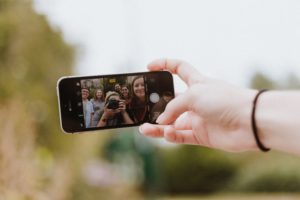Academic and Professional Blogging
Editor’s Note: This post is one in a series about how technology can be used to develop and sustain one’s professional network. The idea for this post came from a think tank hosted by the University at Buffalo’s School of Social Work in June 2019, looking for a way to teach students in their new online Doctorate of Social Program (DSW) program about how to develop key stakeholder networks in relation to a substantive topic area. In this series, we are exploring the concept of a Professional Collaboration Network (PCN), which are technology-mediated user-centered relationship constellations designed to enhance or enrich connections, knowledge, and professional opportunities. This post reviews how academic and professional blogging can be used to share and curate information for practice communities.

Blogs, and the act of blogging, have come a long way since the mid 1990’s when they essentially performed as personal journals published on the internet; they are now often fully fledged outlets for journalism, advocacy, and academic research (Smith, 2010, Kanter and Fine, 2010, Kirkup, 2010, Rosenberg, 2009). Although some may feel that blogging has become passé in the current and crowded social media landscape, others would argue blogging is alive and well (Fiesler, 2019; Perry, 2015). The main goal of this blog post is to describe why and how academic blogging can help contribute to your Professional Collaboration Network (PCN), and offer some basic tips for getting started. To learn more about PCNs, please read this post:
Today most people know what a blog is; in fact ,you are staring at one right now. The bigger question as academics or professionals is why would we want to develop/maintain a blog? Here we dive into just a few of the many answers to this question:
A Love Letter to Social Workers on the Front Lines of COVID-19
Editor’s note: This letter was written by Melanie Sage from the University at Buffalo’s School of Social Work in response to the COVID-19 pandemic. She originally posted it on LinkedIn and is re-published here with her permission. You can follow Melanie on Twitter at @melaniesage.
Social workers are often unsung heroes, and that’s often ok with them. They go about their work in the backgrounds of organizations that are meant to do other things: in hospitals that are meant to save lives, in schools that are meant to educate children, in child welfare agencies where the work is so sensitive that they avoid talking about it. In fact, most people don’t want to think about it; they hear “social work” and say, “OH, I could never do that.” Social workers try to show up with humility while giving their best help to people who are the most vulnerable.
As a social work professor, I’ve done casework in hospitals, child welfare agencies, crisis hotlines, and in the Veteran’s Administration. But now I am in the very privileged place of teaching others about social work while I reflect on, analyze, and research best practices for making the world a better place for the most vulnerable. I have not worked through a pandemic until now. Today I am telling you the stories of my colleagues, my former students, my current students- those I am connected to, like a string of hearts, with our value for social justice serving as a constant thread. I have asked permission to share these stories.
Tech-based Assignments for Remote Teaching & Learning in Social Work
In social work education, we are all trying to figure out how to transition our students, instructors, field supervisors, and courses to remote learning (AKA online course delivery). This is no small feat given that COVID-19 has affected all of us personally as well as professionally. Myself, I have been working to create remote volunteering options for over 100 BSW students in three service learning courses (more on that later).
Over the past few years, I have written about different types of technology-based assignments on this blog, and have asked several other social work educators to share their technology-based learning activities and experiences. In this post, I am pulling together a list of technology-based assignments that you can use and adapt for your own needs during these strange times.
Being a Social Work Student in the times of COVID-19: One way to share, document & support
The COVID-19 public emergency is unprecedented and affects our personal and professional lives. From trying to find diapers and toilet paper to figuring out how to learn remotely as a social work, few of us were prepared for the speed with which this emergency changed our daily lives. And we have yet to know and understand what things will look like in the next few weeks or months.

Thus, we are trying to capture this moment in history by harnessing the power of technology for social good. Through short videos posted on Flipgrid (a social learning platform designed for video discussion forums), we are hoping to create community while also collecting stories from social work students. We hope these stories can help us support and learn from each other during a time of social distancing as well as provide a source of information for future ways to prepare students and educators for these types of crises (i.e. what are the best ways to learn remotely as a social work student or how do I stay connected with my friends and peers from school). We anticipate that these videos will provide a wealth of information for blogs posts or other scholarship that will inform how social work needs to adapt to complex social problems. This might include qualitative thematic analysis or quotes from posts. Any peer-reviewed content will be anonymized, but please remember that these posts are a form of public social media.


